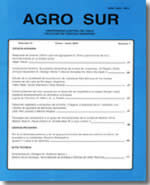RECUPERACION, CONSERVACION Y CARACTERIZACION DEL CABALLO CHILOTE
Main Article Content
Abstract
Fifteen stallions and fifteen mares were bought at the Chiloé archipelago as representatives of the Fino Chilote breed, considered as a typical criollo genotype as they are offsprings of the horses brought by the Spaniard conquerors. These animals and their offsprings were evaluated at Butalcura Experimental Center (INIA), located in Chiloe island. The characterization of these animals, in Butalcura as well as in cooperating farms, was done by registering body measurements and colour characteristics, complemented with genetic markers and studies of genetic diversity in a population of 127 animals. As an additional activity, a program aiming at the conservation of the breed was implemented among local farmers; finally, a series of rules were developed to guarantee the genetic purity of registered horses. Studies comparing the Fino Chilote breed with other breeds indicate that horses from Chiloé are grouped in the same cluster as the Garrano Horse from the Iberian Peninsula and that there is a clear genetic difference between Fino Chilote horses and the Chilean Horse (Criollo Chileno). Other studies show in general that it has a fairly homogeneous population, although it does not present high inbreeding. However, genetically it does not present such a high degree of homogeneity as would be expected considering its geographic isolation. It is possible that the introduction of genotypes of other horse breeds has created this phenomenon. One should also remember that these animals are not found in a single population, but belong to different breeders, which are located in different island of the Chiloe’s archipelago, being relatively isolated among them.

